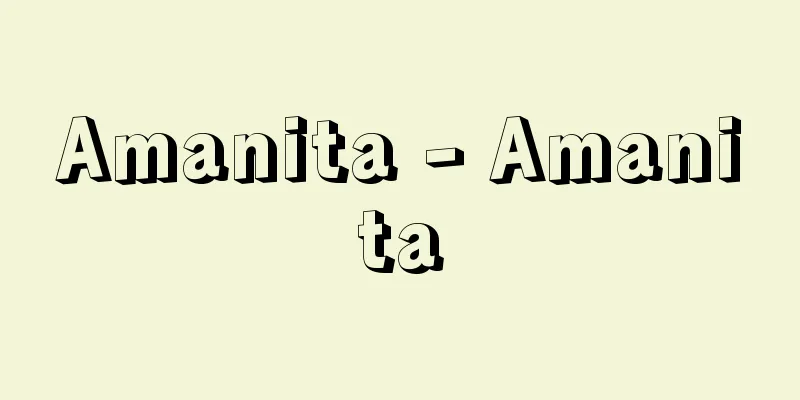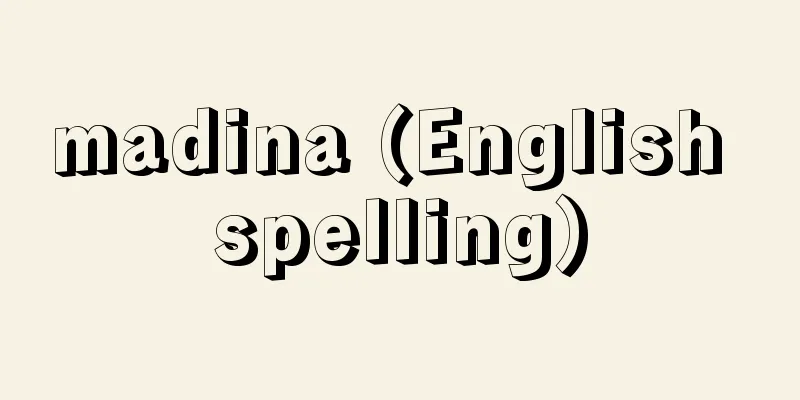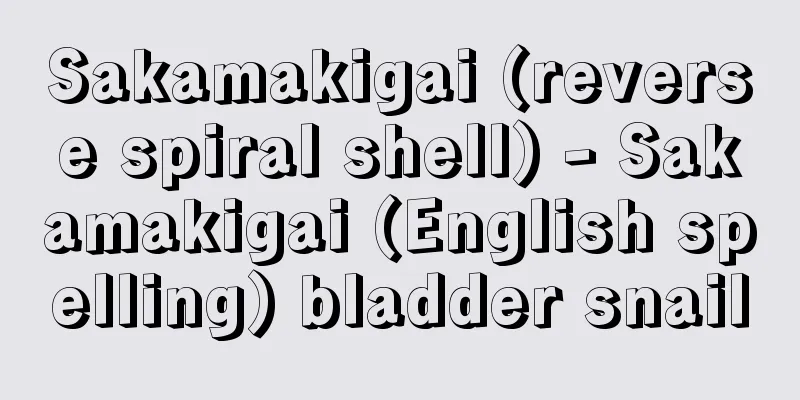Amanita - Amanita

|
A poisonous mushroom belonging to the Basidiomycete family of the Amanitapales order. The cap is 10-20 cm in diameter, round at first, then opens flat. The surface is gray-brown to dark brown, and is dotted with numerous scab-like white warts. These warts are fragments of the pot. The gills are separate from the stem. The stem is 10-25 cm long and 1-2.5 cm thick, with a membranous collar in the middle. At the base, fragments of the pot are arranged in a ring in 2-3 tiers. It is often found in pine forests from summer to autumn. Although it is a well-known poisonous mushroom, the poison is not fatal. Symptoms appear 15 to 30 minutes after eating, and the victim becomes excited like being drunk, experiences mental confusion, hallucinations, and visual impairment, then falls into a deep sleep, but recovers quickly. Sometimes vomiting may occur. [Imaseki Rokuya] Toxic ingredientsIt was previously thought to be an alkaloid called muscarine, but recent research has revealed that it actually contains only a small amount of muscarine, and is actually the same substance found in the fly agaric, ibotenic acid and muscimol. Muscarine is a component found in large amounts in the Amanita genus, and it causes disorders of the autonomic nervous system, including excessive sweating, constricted pupils, arrhythmia, and cardiac weakness. Amanita also has the local name of Flytrap. This is because when Amanita or Fly Amanita is placed indoors, flies gather and lick it up, causing them to fall down. Muto Satoshio (1968) discovered that the flies are attracted to a special fatty component called 1,3-diolein, which he successfully synthesized chemically. This fatty component attracts not only houseflies, but also black soldier flies, springtails, and rove beetles. The reason why they fall down is due to the effects of the aforementioned ibotenic acid and muscimol, but the flies do not die, they are simply paralyzed, and they revive after about two days. In some areas (near Ueda City, Nagano Prefecture), Amanita is preserved by salting or drying to remove the toxicity and can be eaten. [Imaseki Rokuya] ©Junzo Fujishima "> Major types of mushrooms (Basidiomycota) (6) [… Source: Shogakukan Encyclopedia Nipponica About Encyclopedia Nipponica Information | Legend |
|
担子菌類、マツタケ目テングタケ科の毒キノコ。傘は径10~20センチメートル、初め丸く、のちに平らに開く。表面は灰褐色ないし暗褐色で、上に多数のかさぶた状の白いいぼいぼが点在する。このいぼは、つぼの破片である。ひだは茎に離生。茎は長さ10~25センチメートル、太さ1~2.5センチメートルで、中ほどに膜質のつばをつける。根元には、つぼの破片が2~3段、環状に並ぶ。夏から秋、松林に多くみられる。 著名な毒茸(どくたけ)であるが、致命的な毒ではない。食後15~30分で症状が現れ、酒に酔ったような興奮状態になり、精神錯乱、幻覚、視力障害をおこしたあと、深い眠りに陥るが、回復も早い。ときに嘔吐(おうと)を伴うことがある。 [今関六也] 毒成分以前はムスカリンというアルカロイドと考えられていたが、実際にはムスカリンの含有量は少なく、ベニテングタケと同じくイボテン酸とムッシモールという物質であることが、最近の研究で判明している。なお、ムスカリンはアセタケ属に多量に含まれる成分で、自律神経系に障害を招き、多量の発汗、瞳孔(どうこう)縮小、不整脈、心臓衰弱などをおこす。 テングタケには、ハエトリタケという地方名もある。これは、テングタケやベニテングタケを室内に置くと、ハエが集まり、なめて倒れるからである。ハエを誘引するのは1・3-ジオレインという特殊な脂肪成分であることが武藤聡雄によって明らかにされ(1968)、化学的合成にも成功している。この脂肪成分は、イエバエのほかにミズアブ、トビムシ、ハネカクシなども誘う。また、なめて倒れるのは、先のイボテン酸とムッシモールの効き目であるが、ハエは死ぬのではなく麻痺(まひ)するだけで、2日ほどたつと生き返るという。テングタケを塩蔵または乾燥して保存し、毒性をなくして食用にする地方(長野県上田市付近)もある。 [今関六也] ©藤島淳三"> キノコのおもな種類(担子菌類)(6)〔… 出典 小学館 日本大百科全書(ニッポニカ)日本大百科全書(ニッポニカ)について 情報 | 凡例 |
<<: Snout butterfly - Tengucho (English spelling)
Recommend
Geum japonicum (radish grass) - Geum japonicum (English spelling)
A perennial plant of the Rosaceae family. Although...
Olgierd - Olgierd
…son of Grand Duke Gediminas. Also called Olgierd...
Causal fallacy
...There are cases where the mistake is within th...
Hayato Fukuba
Year of death: May 19, 1921 Year of birth: Decembe...
King Olonpoto - Olonpotoou
...Later, as coastal trade flourished with the ad...
West Palm Beach
A resort city in southeastern Florida, USA. Popula...
Aphrodisiac - aphrodisiac
A drug used to treat male impotence, also known a...
hemiterpene
…Terpenes with n 3 or more are also known in natu...
Amin, S.
...Excellent Marxist economists such as M. Dobb a...
Web - World Wide Web
A client-server system that structures information...
Illumination - Irumine-shion (English spelling) illumination
Originally a word meaning illumination, it refers...
Dorsal ocellus
…An eye with a simple structure different from th...
Johnston Forbes‐Robertson
1853‐1937 British actor. He attracted attention fr...
Hamartomatous polyp
...This type of removal using an endoscope can be...
Opsiphanes
…General term for insects belonging to the Brasso...









![Socotra [island] - Socotra](/upload/images/67cc111204048.webp)